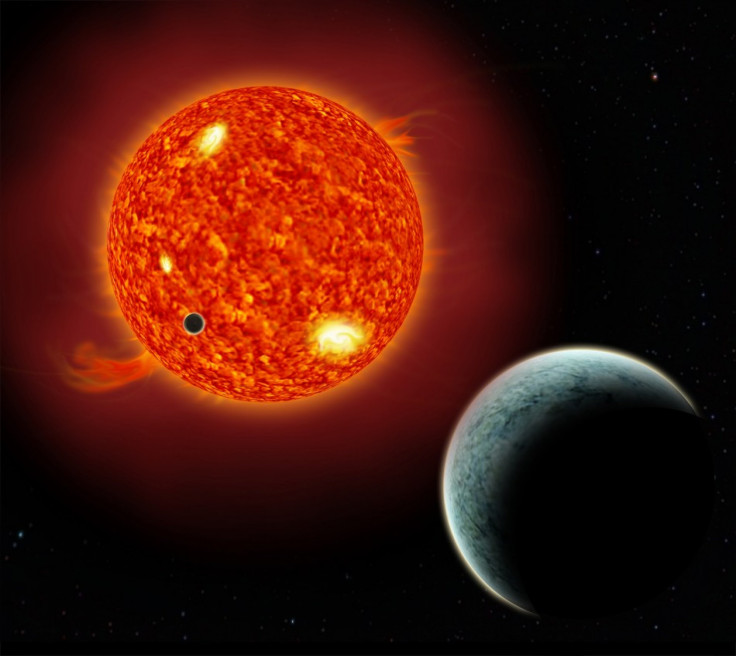Amateur Scientists Join the Hunt for New Planets

A group of amateur planet sleuths is helping researchers online in the hunt for Earth-like planets far off in outer space.
The voluntary planetary detectives recently bagged two potential planets, even as funding to continue collecting the data may be threatened.
Since the launch of Planet Hunters in December (planethunters.org), 40,000 web surfers have helped in the search for new planets by crunching data collected from NASA's Kepler mission (kepler.nasa.gov). The $600 million mission launched in 2009 to search for Earth-like planets beyond our solar system, also known as exoplanets.
The citizen scientists hit pay dirt with the discovery of two potential exoplanets, according to a study published Sept. 22 in the Monthly Notices of the Royal Astronomical Society.
This is the first time that the public has used data from a NASA space mission to detect possible planets orbiting other stars, said Yale astronomer and exoplanet expert Debra Fischer, who helped launch the Planet Hunters project. As soon as I saw the Kepler data, I knew this would be a great project for citizen scientists.
However, with the belt-tightening in Washington, the Kepler mission's leader told The Atlantic that he's worried about possible budget cuts as the project nears the end of its first three and a half years.
There is a serious worry that Kepler's funding might not be extended, Bill Borucki, a space scientist at the NASA's Ames Research Center, told The Atlantic. If we care about finding out if we're alone in the universe - and we do - NASA and Congress have got to come together to find $20 million for this small mission.
The Planet Hunters chase down exoplanets for free. For the last several months, the star-gazing desk jockeys helped professional astronomers analyze light from 150,000 stars with the hope of finding orbiting Earth-like planets.
The group spent a total of 60 years of man hours and found two potential planets rotating around their respective suns at a breakneck speed - 10 and 50 days. One of the candidate planets could share a similar size to the Earth. Astronomers said they doubted the planet could support life because it likely didn't contain liquid water.
This crowdsourcing is just what people want, said Sara Seager, planetary scientist at the Massachusetts Institute of Technology, who is not involved with Planet Hunters or Thursday's report. She further explained that although the Kepler data set was of high quality, having an extra 40,000 pairs of eyes looking over the data could be a good method for finding patterns a computer might miss.
I can emphasize, from painful personal experience, how good the human brain is at finding signals that look like transits as compared to a computer algorithm which isn't allowed to deviate from specific instructions, she said. It's not surprising, expected even, that a few planet candidates slipped through the Kepler protocol and were rejected. At the same time, crowdsourcing is not supposed to find all planet-candidates either.
Researchers have already identified 684 exoplanets, according to PlanetQuest, the planet hunting information arm of NASA (planetquest.jpl.nasa.gov), a number that continues to grow.
The Kepler mission added 1,200 more exoplanet candidates that excluded the two new Planet Hunter finds because of various technical reasons.
Astronomers previously used the Doppler method to detect planets. A planet zipping around a star will cause the star to wobble from the planet's gravitational tug. The Planet Hunters team identified exoplanets by another method that involves finding subtle shifts of a star's brightness as an exoplanet moves in front of a star.
September has been a robust month for planet discovery. An international team announced the discovery of 50 exoplanets at a September conference on Extreme Solar Systems. A couple of days later, researchers from the SETI Institute in Mountain View, Calif. announced they had identified a Saturn-sized exoplanet that orbited around two stars.
Planet Hunters users are now sifting through the next 90 days's worth of Kepler data in the hopes of adding to the count. This is what we found after just a preliminary glance through the first round of Kepler data, Fischer said. There's no doubt that, with each new round of data, there will be more discoveries to come.
For now, the two exoplanets remain unnamed, but Fischer said the next step could be for the Planet Hunters to vote for a name.
It's hard to say if it would be adopted in the scientific community, but it would be a lot of fun, Fischer said.
© Copyright IBTimes 2024. All rights reserved.





















